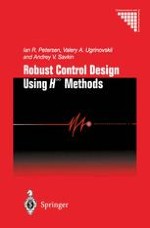2000 | Buch
Robust Control Design Using H-∞ Methods
verfasst von: Ian R. Petersen, BE,MSEE,PhD, Valery A. Ugrinovskii, PhD, Andrey V. Savkin, PhD
Verlag: Springer London
Buchreihe : Communications and Control Engineering
Enthalten in: Professional Book Archive
